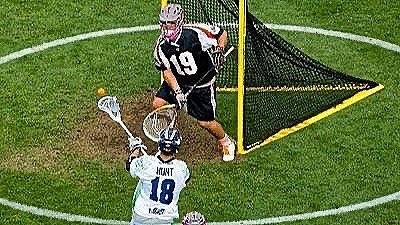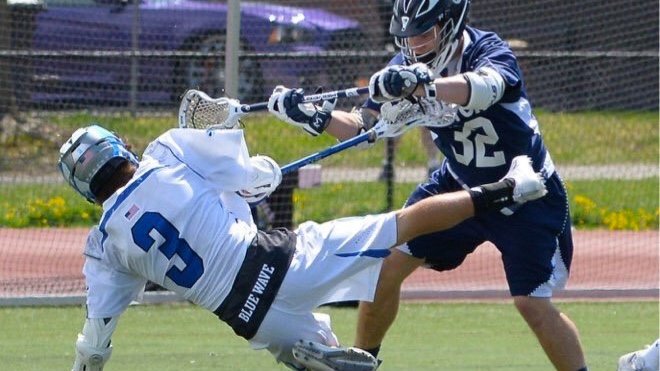What Happens If the Ball Gets Stuck in Your Stick?
In men’s lacrosse, when the ball becomes stuck in the head of a player’s stick and cannot move freely, it’s officially called withholding the ball from play. This violation occurs whether the ball is jammed between the mesh and plastic or trapped too deeply in the pocket. Once a referee spots it, they immediately blow the whistle and award the ball to the opposing team, no matter if it was accidental. Withholding is enforced to keep the game fast, fair, and focused on passing, shooting, and continuous movement.
Top 10 Men's Lacrosse Rules You Must Know as a New Coach
Knowing the key rules of men's lacrosse is essential for any new coach to guide their team safely and confidently. This article breaks down the most important rules clearly, helping you avoid costly mistakes and confusion on game day. Staying informed ensures you can coach smarter, protect your players, and build a winning culture from day one.
Over and Back Rule in Men's Lacrosse
The over and back rule in men's lacrosse prevents teams from retreating into their defensive half after establishing possession in the offensive zone, resulting in a turnover if the ball crosses back over midfield due to an offensive team's action. This rule ensures fast-paced play, encourages strategic ball movement, and aligns with other lacrosse rule sets to maintain consistency and fairness.
Understanding Substitution Rules in Men’s Lacrosse
In men’s lacrosse, substitutions occur on-the-fly through the substitution box, allowing players to enter and exit without stopping play, as long as they follow the one-off, one-on rule to maintain no more than 10 players on the field. Violations, such as too many players on the field or exiting outside the substitution box, result in penalties that can disrupt the game.
Crease Violations in Men’s Lacrosse: Rules and Penalties Across Different Levels of Play
A crease violation in men’s lacrosse occurs when an offensive player steps into the goalie’s crease, resulting in a turnover. The enforcement and penalties for this violation vary slightly between youth, high school, college, professional, and international play.
Tripping Penalty in Men’s lacrosse
In men’s lacrosse, tripping occurs when a player uses their stick or body to intentionally or unintentionally make an opponent fall. The resulting penalty can range from 1 to 3 minutes, depending on the severity of the infraction.
Ensuring a Legal Lacrosse Pocket: A Detailed Guide for Boys’ High School
In boys’ high school lacrosse, a legal pocket must follow strict rules regarding depth and dimensions. The ball should release easily during a stick check, and the pocket’s shooting strings must be within four inches from the top of the head. Stick checks can occur at various times: before the game, during timeouts, or after goals, ensuring players maintain legal equipment throughout play. These checks help prevent any unfair advantages and ensure consistency in gameplay.
Slashing in Men’s Lacrosse: Key Rules and Scenarios
Slashing in men’s lacrosse is a personal foul where a player swings their stick with reckless or violent intent, making contact with an opponent’s body or stick. It can be called even if no contact is made, depending on the severity of the swing. This penalty results in 1-3 minutes in the penalty box, and the penalized team plays a man down. Slashing is common in youth lacrosse, as players often lack the stick control needed to avoid these infractions.
Quick Explanation of Cross-Checking in Men’s Lacrosse
In men’s lacrosse, a cross-check occurs when a player uses the shaft of their stick to strike or push an opponent between their hands, which is illegal. Referees call it differently across levels—strictly in youth leagues for safety, while higher levels like college and professional lacrosse allow more physical play, so long as it’s controlled and not excessive.
Key Infractions Leading to a 3-Minute Non-Releasable Penalty in Men’s Lacrosse
A 3-minute non-releasable penalty in men’s lacrosse is issued for severe infractions, requiring the penalized player to serve the full time regardless of opposing goals. Common offenses include targeting the head or neck, unsportsmanlike conduct, illegal equipment, and checking defenseless players. After a goal, teams face off, but the penalized team remains a man down. This rule emphasizes maintaining safety and fair play on the field.
Push From Behind in Boys’ Lacrosse: A Common Youth Infraction
A push from behind is a frequent penalty in boys’ lacrosse, especially at the youth level. It occurs when a player illegally pushes an opponent from behind, causing them to lose balance. This infraction is common during ground ball scrambles, as younger players often lack body control and proper technique. Coaches should focus on teaching ground ball fundamentals and body positioning to reduce these penalties and promote safer, more effective play. The penalty for a push from behind is typically a 30-second technical foul.
The 10 Key Penalties in Men’s Lacrosse: A Path to Smarter Play
Understanding key penalties in men’s lacrosse, such as slashing, cross-checking, and offsides, is vital for players and coaches to maintain fair play and avoid game-altering consequences. These infractions can disrupt momentum and force man-down situations, giving opponents a strategic edge. By grasping the importance of staying within the rules, players improve their game while minimizing the risk of suspension or team disadvantage, ultimately helping to ensure a smoother, more efficient lacrosse experience.

